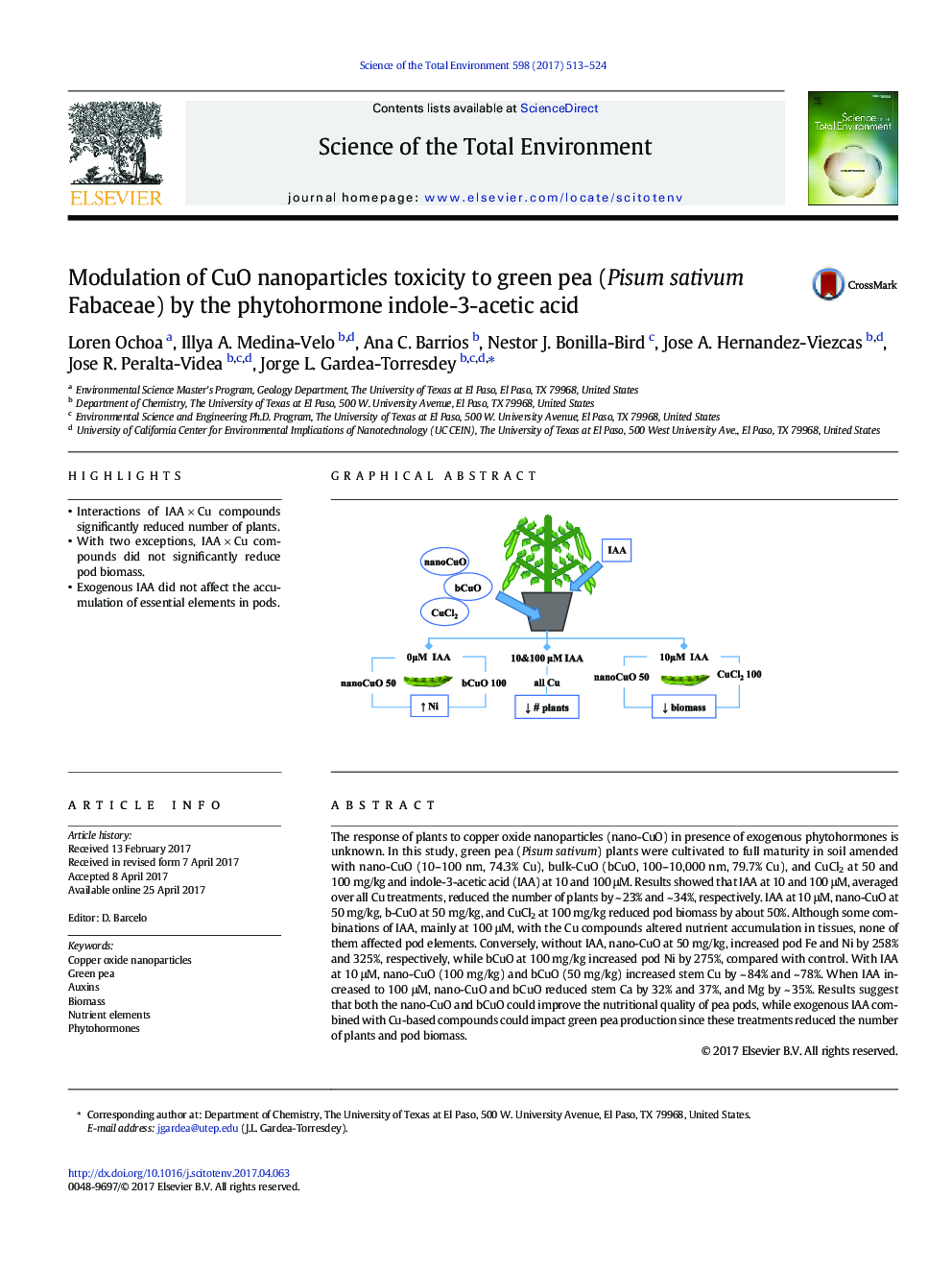| Article ID | Journal | Published Year | Pages | File Type |
|---|---|---|---|---|
| 5750964 | Science of The Total Environment | 2017 | 12 Pages |
â¢Interactions of IAA Ã Cu compounds significantly reduced number of plants.â¢With two exceptions, IAA Ã Cu compounds did not significantly reduce pod biomass.â¢Exogenous IAA did not affect the accumulation of essential elements in pods.
The response of plants to copper oxide nanoparticles (nano-CuO) in presence of exogenous phytohormones is unknown. In this study, green pea (Pisum sativum) plants were cultivated to full maturity in soil amended with nano-CuO (10-100 nm, 74.3% Cu), bulk-CuO (bCuO, 100-10,000 nm, 79.7% Cu), and CuCl2 at 50 and 100 mg/kg and indole-3-acetic acid (IAA) at 10 and 100 μM. Results showed that IAA at 10 and 100 μM, averaged over all Cu treatments, reduced the number of plants by ~ 23% and ~ 34%, respectively. IAA at 10 μM, nano-CuO at 50 mg/kg, b-CuO at 50 mg/kg, and CuCl2 at 100 mg/kg reduced pod biomass by about 50%. Although some combinations of IAA, mainly at 100 μM, with the Cu compounds altered nutrient accumulation in tissues, none of them affected pod elements. Conversely, without IAA, nano-CuO at 50 mg/kg, increased pod Fe and Ni by 258% and 325%, respectively, while bCuO at 100 mg/kg increased pod Ni by 275%, compared with control. With IAA at 10 μM, nano-CuO (100 mg/kg) and bCuO (50 mg/kg) increased stem Cu by ~ 84% and ~ 78%. When IAA increased to 100 μM, nano-CuO and bCuO reduced stem Ca by 32% and 37%, and Mg by ~ 35%. Results suggest that both the nano-CuO and bCuO could improve the nutritional quality of pea pods, while exogenous IAA combined with Cu-based compounds could impact green pea production since these treatments reduced the number of plants and pod biomass.
Graphical abstractDownload high-res image (183KB)Download full-size image
